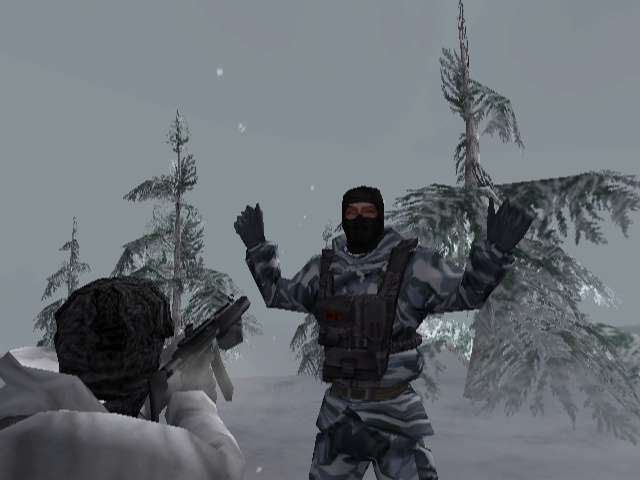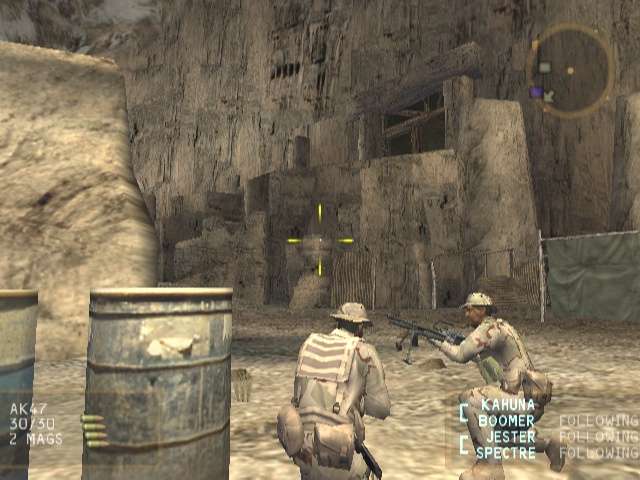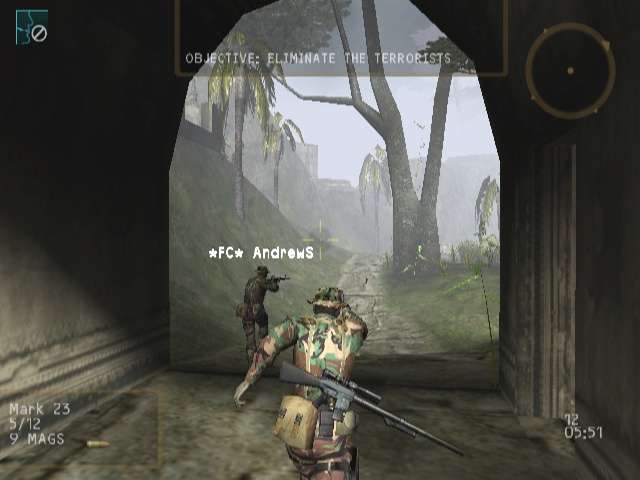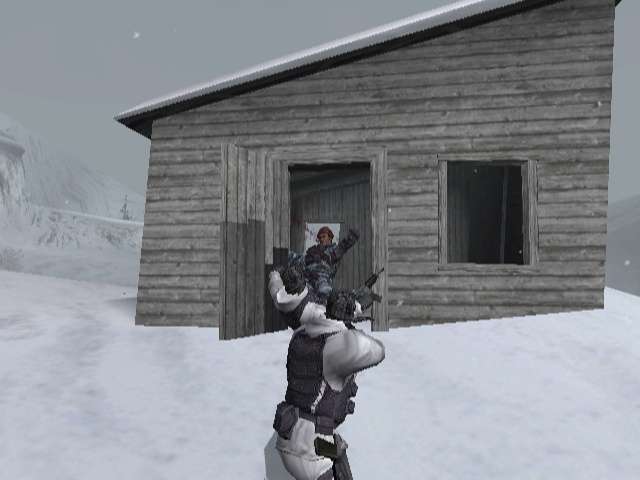SOCOM: US Navy SEALs
Hands-On - online gaming hits PS2 with a ping
As far as online gaming is concerned, tactical shooters have long since outstripped their forefathers, with the likes of Counter-Strike hogging an absurd percentage of fraggers, and games like The Sum Of All Fears, America's Army and the forthcoming Raven Shield piquing interest all over the shop. It's perhaps unsurprising then that Sony has made Zipper Interactive's SOCOM: US Navy Seals its flagship online gaming title, and that in its first few days on sale the game sold out Sony's first run of network adapters without breaking a sweat.

Special Needs
SOCOM (which stands for Special Operations Command) puts gamers in a number of unsupported high-risk positions and demands sneaky tactics and teamwork to oust various terrorist opponents. In the single player game, there are 12 missions, which involve scuttling ships, retrieving hostages and destroying hostile forces, with more sub-objectives than a weekend in Amsterdam. Turning to the multiplayer aspect, you'll find three types of online game; demolition, extraction and suppression. In demolition the objective is to find a bomb and plant it in your opponent's base, while extraction is a fairly typical hostage rescue scenario (ala Counter-Strike) and suppression is straightforward team deathmatch with no distractions.
That's not to say SOCOM lacks distractions though - the game ships with a microphone and earpiece headset to bark orders to your friends online and, ingeniously, to your AI-controlled teammates in the single player game. Assuming the voice recognition picks up on it, which it does, most of the time. As team leader, you are responsible for instructing your team-mates, telling them to hold their ground, come along and join you, assault a particular area or innumerable variations on the above. All of this done via an in-game command selection menu - not unlike the one seen in Unreal Tournament or Counter-Strike - or via your headset. Barking an instruction and hearing "yes, sir" in your ear is quite a buzz.

Boot camp
The single player game is really just a starter serving, but in itself it's not a bad little game, although it does fail in a few respects. After a short and not altogether strategic briefing, where you find out what the mission objectives are, pore over a schematic of the area and choose your team's weapons loadout, you're deposited at the start in two-man teams and instructed occasionally via radio - and more often, if you like, thanks to the toggleable in-game help system.
Your adventures take you across a number of fairly contrived locations, including, unsurprisingly, a tanker, an oilrig, the Antarctic and several others. Mission objectives are available for perusal in-game, and as you sneak around silently popping enemies with your suppressed pistol or throwing stealth to the wind and blowing seven shades of crap out of everything, you'll gradually complete them. Fortunately, only the primary objectives are obligatory, and you'll progress even if you don't complete every secondary objective - although you won't receive the top ranking.
The biggest problem with the single player game is the AI. From our experiences so far, the balance is fine, but it's more that your team-mates and your mutual opposition are all equally stupid. SOCOM isn't a game your friends will understand - if they witness a couple of fellows facing off with loaded weapons, and instead of firing, switching to rifles and clubbing one another into submission, they will snarl and mutter something about an experience on de_dust involving a lagged out modem user.

Major malfunction
Head online though and you can engage in battles with up to 16 players total, eight SEALs and eight terrorists, and they aren't all morons. Getting online in the US is a cinch - you plug your network adapter in, plug it into a network socket, hit a few buttons on the PS2 interface and in a few seconds you're browsing servers, creating or joining clans, viewing rankings and more. Let's hope it ends up like this in Europe. At the moment a couple of options are disabled due to the heavy load, but you can certainly engage in hundreds of demolition, extraction and suppression scenarios with thousands of your fellow men. It's just that for the moment, they're all American, so even if you could get online from the UK (which, to the best of my knowledge, you can't), you probably wouldn't want to. Judging from the reception we got, they're quite patriotic about their beloved SEALs.
The tone was generally fine though, with a lot of reasonable individuals working steadily together towards the common goal. Each game is a number of games in sequence, like a clan match, with the total number of rounds totted up at the end. After it's all shot and blown, the team with the most points wins and an MVP is named. The MVP is probably our least favourite aspect at the moment, because it really discourages teamplay. In the same way that everyone wants to score the goal in a playground kickabout, everybody playing SOCOM charges around attempting death-defying feats of Schwarzenegger-esque lunacy in pursuit of the MVP accolade. Of course most of them fail miserably, and it costs you dearly as a team.

Maggot!
SOCOM's visuals are on a par with the same sort of games on PS2. Level design is quite chunky and the locations textured with a distinct lack of imagination, but the character models are beautifully animated. Instead of just radioing a SEAL to sneak up and chuck a grenade through a doorway, your man may raise an arm and signal to his compatriot with a series of ludicrous wrist actions. One feels that the third person view was selected to really emphasize this quality of animation, because in first person (through a sniper scope) the game looks otherwise quite bland. That said, lighting effects are around in abundance, and the weapon designs and reload animations are spot on. Another aspect we're quite fond of is the way a SEAL holsters his pistol and slings his rifle on his back instead of disappearing them into the ether as with Counter-Strike or, well, every shooter in history.
The audio side of the game is another victory, with a lot of ambience in place of a stomping soundtrack, and you'll want to pay attention to feet thudding in snow (not to mention footprints) and other audio clues in dealing with situations. Particularly online.
Conclusion
SOCOM: US Navy Seals is still quite some way off in the UK and Europe, thanks largely to Sony's indistinct plan for online gaming. Expect to learn more about PS2 online during October, and with any luck, SOCOM. One good thing about our position in Europe however, is that with the delay between NTSC and PAL releases, we can almost certainly avoid bugs and exploits sneaking into the equation. When SOCOM appears in Europe, it'll have been tested to perfection by a superpower's worth of eager shooters.

